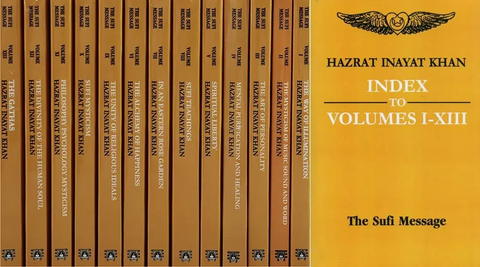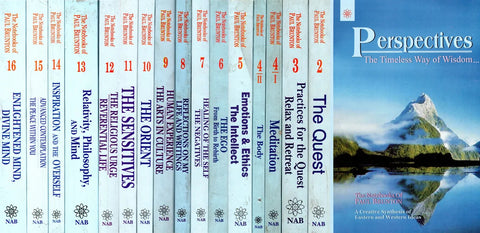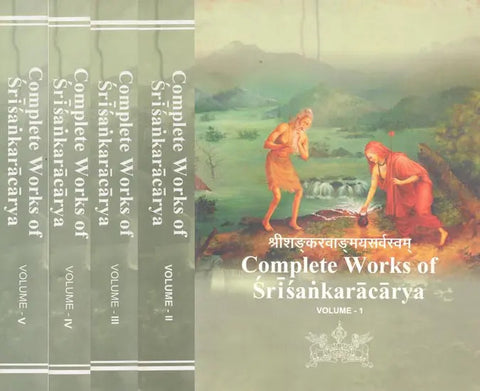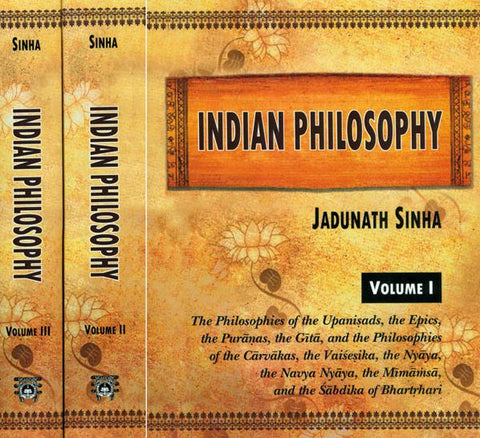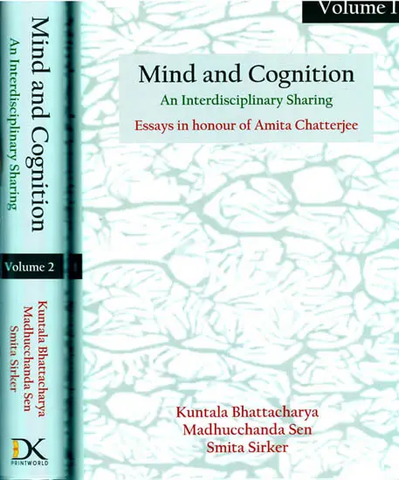Your cart is empty now.
The Yoga-Vasistha is a popular text on AdvaitaVedanta, though it is more like the Puranas in form and style. It is greatly valued for the wisdom it contains and enjoys a popularity rivaled only by the Bhagavadgita and Srimadbhagavatam.
The work is in the form of a dialogue between Sri Rama and the sage Vasistha and covers a variety of subjects including the philosophical problems of life, death, human suffering and final release.
It is also known as Arsaramayana, Jnana Vasistha, Maharamayana, Vasistha Ramayana or merely Vasistha and is traditionally ascribed to the sage Valmiki. This extensive philosophical poem contains as many as 23, 734 verses characterized by exquisite poetic qualities.
This work is divided into Six Prakaranas or Sections, Viz., Vairagya, Mumuksu, Utpatti, Sthiti, Upasama, and Nirvana dealing respectively with topics of philosophical importance like indifference to worldly things, longing for liberation, origin of the universe and jiva, preservative aspect of the mind and the universe, quiescence of the mind after its sport in the universe and the final merger into the Absolute.
Part I: Containing Vairagya, Mumuksu, Utpatti, Sthiti and Upasama
Part II: Containing Nirvana – Purvardha and Uttarardha
This beautiful epic of Indian Philosophy with ‘almost every verse full of finest imagery expressed in words exceedingly pleasing to the ear” has been hailed as ‘one of the greatest books... ever written under the sun’,2 ‘the crest-jewel of all the works of Vedanta’3 and ‘a work of Siddhavastha4’.
It has been widely read or heard either in original Sanskrit or in translations and sermons (Pravacanas) by thousands of men and women in different strata of the socially, for mental solace and/or spiritual advancement. We, in Maharashtra, have special regard for the YV, as it has strongly influenced the philosophy of our greatest philosopher saint Jnanadeva (A.D. 1275-1296) and other saints down the centuries.5
The importance of YV (Yoga-Vasistha) and its digest LYV (Laghu Yoga Vasistha by Abhinanda) was recognised by Moghul emperors Akbar, Jehangir & Prince Dara Shikoh. The following selected list of Persian renderings of the YV & LYV and the patrons for whom they were translated will be enough to show its historical importance.
Patron Name of the Persian Translation
Akbar
(1) Basishtha-jug (An abridged translation of YV—A.D. 1597).
(2) Jug-bashasht—by Farmali (?)
(3) Shariq al-ma ‘rifat—Undated. Based on YV—Vedantic ideas explained with Quar’anic verses. Attributed to Faidi.
Jehangir
(1) LYV translated by Nizam al-Din Panipati; Mir Findiriskii wrote notes on it and composed its praise in verse.
Later compilation on the above work of Panipati:
(1) Muntakhab-i-jug. Selections from (1) The above translation compared with Sufi Parallel.
(2) Tarjuma-i-Jug-basasht is also an abridgement of (1) above in A.D. 1764.
Dara Shikok
Jug-bashast at the instance of Dara Shikoh, in 1656 A.D. A number of Persian and Hindi verses of the Hindu poet Wall Ram (Dara Shikoh’s Secretary) are incorporated in this translation (Edited by Tara Chand). In the introduction we are told that Dara Shikoh decided to get YV translated as Vasistha and Rama came in his vision. Vasistha told Rama that as seekers after Truth both Rama and Dara were brothers. Rama embraced Dara and shared with him some sweets given by Vasistha.
(Abridged from F. Mujtabai—Hindu Muslim Cultural Relations, pp. 81-84, National Book Bureau, New Delhi, 1983)
THE TITLE (5)
As stated in the colophon of every chapter or canto (sarga),1 YV is variously called Arsa (Ramayana), Vasistha Ramayana, Maha-Ramayana, written by Valmiki. The term ‘Arsa’ in the first title can be interpreted as ‘composed by a sage (rsi) ‘or ‘ancient’, as its authorship is attributed to sage Vasistha or Valmiki. And as both these sages belong to hoary antiquities, YV is ipso facto ‘ancient’. The rote of Vasistha as a family priest of the solar dynasty of Ayodhya and as a spiritual preceptor of Rama in this work is so predominant that the association of Vasistha’s name to this poem is the most appropriate tide whether it is called ‘ Vasistha Ramayana’ as in the colophon or “Yoga Vasistha” as in common parlance. The word ‘Yoga’ however is to be interpreted in the sense of ‘end’ or ‘means’2 as explained in YV iv (Sthiti). 62.1-2.
Traditionally it is believed that YV was written by Valmiki. The semblance of Valmiki’s authorship is maintained throughout the text. King Aristanemi enquires of Valmiki about the spiritual knowledge leading to Moksa (Liberation) and to satisfy his query, Valmiki narrates this dialogue between Vasistha and Rama. It is also Valmiki who seems to conclude YV.’
Though the colophon to the end of canto 107 of Book iii of YV does not mention ‘Moksopaya’ as the title of the text, there is positive evidence in cantos 1-3 that it was called Mokopaya, i.e. ‘Means (to attain) Moka’, vide for example, YV ii .53, i.2.3, ii. 10.4, 7; ii.l8.60. In ii.l7.6, YV is called “A digest of the text called Mokopaya consisting of thirty two thousand verses”5. Instances after Book iii need not be given as the title “Mokopaya” is incorporated in the colophon of every sarga (canto).
The adjective mocha ‘great’ in the title ‘Maha Ramayana’ can be explained as refer ring to the philosophical importance as well as the traditionally regarded larger bulk (32000 verses) of YV as compared with Valmiki Ramayana.
The current title ‘Yoga Vasistha’ refers to both the author and its content and has been now accepted by all for its meaningfulness.
Though the colophon claims that the present text consists of 32,000 verses1, it actually contains 23734 verses. YV ii. 17 gives the names of each book (Prakarana) and the number of verses in each of them as follows:
Serial No. of the Prakarana 4: The Title of the Prakarana- No. of Verses
i Vairagya 1,500
ii Mumusku Vyavahara 1,000
iii Utpatti 7,000
iv Sthiti 3,000
v Upasama 5,000
vi Nirvana 14,500
Total no. of verses 32,000
The epic starts with an obeisance to the Ultimate Reality as a Mangalacarana.
The story begins with a question by a Brahmin Sutiksna to sage Agasti as to whether the cause of liberation (from samsarara) is knowledge (Jnana) or work (karma) or both. Agasti replies that just as a bird necessarily requires two wings for flying up in the sky, so one requires both jnana and karma to attain the highest end2 (i.e. Moka). As in epics, Agasti assumes the position of a reporter of the dialogue on this point between two interlocutors Karunya and Agnivesya and the chain of interlocutors reaches to Valmiki’ who recounts the background of YV as follows:
One day, the sage Visvamitra approached king Dasaratha and requested him to send his son Rama for the protection of hi proposed sacrifice. After a great deal of persuasion, Dasaratha sends, for Rama who has recently returned from ‘pilgrimage’. When Rama came, all were wonderstruck to find him so overpowered with a complete sense of despondency and nonattachment. When asked about the cause of hi strange behaviour, Rama broke out in a long harangue on the defects of the body and its various stages from childhood to old age and the evanescent nature of the world and finally declares:
“As I am unrelated to everyone and everything, I shall get extinguished like a lamp short of oil. Abandoning everything I shall shuffle off this mortal coil”. Book ii, Mumuksu- Vyavahara: Visvamitra surmised that Rama had become eligible to understand spiritual knowledge like Suka and requested Vasistha to guide him spiritually:
Vasistha explained the unreality of the phenomenal world and, the non-distinction between liberation while alive and ‘liberation after death. He strongly refuted fatalism and established the superiority of action (Karma) over Fate. It is not understood why the table of contents of YV should be inserted at the end of this book (cantos 17-20.)
Book iii, Utpatti, of 122 cantos repeatedly explains the absolute non-existence of the phenomenal world which is a creation of Brahma’s mind. To illustrate this ultimate ideality of the universe, the philosophy of death, after-death experience and relativity of time and space, equality of men and women in acquiring supernatural powers, he tells a lengthy legend of Lila (cantos 14-60). Though philosophic in content, it reads like a beautiful classical poem. Vasistha narrates another story of demoness Karkati to emphasize that the knower of the Reality shall have no fear of Samsara.
He further states how fourteen categories of jivas are evolved from Brahman and are hence identical with him. Then follows a discussion on the mind, its various synonyms and the need to concentrate on the supreme soul. In the course of this discussion, Vasistha tells the story of a magician to illustrate the ideality and relativity of all things, Time and Space. The book ends with the description of the seven stages of jiva’s spirituality, knowledge and avidya.
Book iv, Sthiti, consists of 62 cantos. This picture called the phenomenal world is caused by the mind and with the realization of Brahman, the mind gets nullified and the world appears as Brahman. Vasistha tells the story of Sukra to illustrate the marvellous effects of desires on one’s life and how even a passing wish necessitates a new birth for its fulfilment (cantos 5-16). He then narrates the episode of demon Sambara to illustrate how failures in life are due to the identification of body with self. The Buddhist influence is felt in the story of Dasura (cantos 48-56) which describes the futility performance of 4/edic sacrifices and penance. At the end of that session, Vasistha blesses Rama to be stable in the seven stages of jivanmuktas (liberated during life time).
Book v (of 93 cantos) called Upasama consists of a number of interesting tales like that of Janaka, Bali, Gadhi and others, each story teaching new truths.
Janaka, king of Videha, happened to overhear some Gathas sung by Siddhas about the real nature of the self. They led to his realization of the self and he ruled wisely even after such realization. The story of Punya and Pavana shows the absurdity of grief over the death of a relative as we have been having such relatives in every birth. The story of Bali shows how nirvikalpa samadhi is attained by meditating that everything is consciousness. The story of Prahlada emphasizes the need of self-effort instead of grace in realizing self. The interesting story of Gadhi demonstrates the wonderful power of Maya, as what he experienced in a dip of a few seconds had actually happened elsewhere in his time. The story of Suraghu shows how equanimity even amidst the routine of daily duties is possible.
It being evening, Vasistha concluded by stating that a person endowed with spiritual knowledge is unperturbable.
The vi and the last book, Nirvana, is so bulky (14500 verses) that it is divided into parts—Purvardha and Uttarardha. The influence of Trika Saivism (in addition to that of Buddhism) is predominant here. Some scholars think it to be a later compilation after the Moksopaya stage).
The next morning when the meeting was held after the prelimnaries, Vasistha advised breath control as the means to wipe out Vasanas. He described his visit to Bhusunda, the crow, to illustrate the possibility of an infinitely long life through masterly breath control (cantos 14-28). The next episode called Sivapuja (cantosio-51) is powerfully influenced by Trika. That the knowledge of the self is the best way of worshipping the self is also Vedantic.
Arjunopakhyana (cantos 52-61) is obviously under the influence of the Mbh or rather 8G. The most interesting and important episode is that of queen CU4aIa (cantos 77-110)-— really an independent work though incorporated in YV. It establishes the equality of men and women in spiritual life. It is the renunciation of internal desires or cravings rather than the renunciation of externalities that is essential for self-realization. The story of Bhrngisa teaches how to be a great doer, enjoyer and renouncer. A detailed discussion of the seven stages of Yoga is given in the remaining cantos (115-126).
The Uttarardha of Book vi, Nirvana, consists of 216 cantos. It opens with a description of the life of jivan-muktas? It tells how self-control is essential for the fruits of the study of Sastras (the story of Vidyadhara, cantos 6-16). But more interesting is the story of a Block of stone (pasana) which illustrates the possibility of a whole universe within a point in space. Similarly important and interesting is the story of king Vipascit which illustrates the creative power of thought and the effect of desire on our transmigratory process. The story of corpse (a Vyadha) illustrates that every individual is a cosmic Deity of his universe. We find a repeated glorification of the power of thought or desire in many stories, e.g. the story of an ascetic (Tapasa) illustrating the possibility of multiplication of worlds by thought-power.
After discussing various philosophical problems, the final conclusion is that Brahman is the only Reality. At the end of the discussion, Rama uses the words of Arjuna spoken at the end of BG xviii. 73 and confesses that his delusion has vanished and he would abide by Vasistha’s order.
After vi. ii. 214, the story winds up smoothly and systematically, the student-member of each of the pair of interlocutors expresses satisfaction, the last being Brahmin Sutiksna who approached sage Agasti with his doubt.
The epic concludes with the famous salutations to spiritual guides:
Brahmanandam parama-sukhadam etc.
But here the salutation is offered to sage Vasistha.
Vedas and Upanisads
As a Brahmanical work YV has imbibed the essentials of Vedic literature (including older Upanisads) in its fundamental philosophy-obviously the echoes, nay even the wordings of Vedic texts are found throughout the work. Thus:
Manascandramaso jatam
Manasascandra utthitah
- YV vi.ii (Uttarardha) 2.9
Is an obvious echo of RV x.90.13;
Candrama manaso jatah/
YV concludes its teaching with the following verse:
Yat sarvam khalvidam Brahma/
Tajjaln iti ca sphutam//
- YV vi.ii (Uttarardha) 216.25
It is nothing but a versified form of Chandogya Up. Iii. 14-1:
Sarvam khalvidam Brahma
Tajjalan iti santa upasita.
Some of the verses are bodily incorporated from the Upanisads. For example, the S vetasvatara Up. Iii. 16 is the same as YV vi. Ii (Uttarardha) 14.9.
About later Upanisads, B.L. Atreya has made a strong case to prove that the following minor Upanisads are either entirely or partially borrowed from YV.
He has further named seven more minor Upanisads such as the Jabala Darsana, the Maitrayani and other which have some textual portion common with YV. Dr. Atreya has also noted some of the verses from the minor Upanisads which are not traceable in YV but are found in its digest LYV (Laghu Yoga Vasistha). For example, the Maha. Up. v. 55-58 missing from YV is found in LYV iv. 14.2, 4-6.
Dr. Atreya has put in enormous labour to show that YV is the source of these minor Upanisads. But on the basis of the same data Dr. Mainkar comes to the opposite conclusion that YV is the borrower as it expresses the crude, simple Upanisadic expressions into better, more poetic yet appropriate words.
I believe that both the minor Upanisads and YV have used the enormous traditional ascetic literature (mainly gathas and anustubh verses) current in ancient India in Sanskrit, Pall and Prakrits. We must give due credit to the last redactor of YV for presenting that valuable oral tradition of ascetic poetry in a refined form.
YV’s self-designation of being the ‘digest’ Sara-Samhita, ‘Moksopaya’ (iii. 10.4, ii. 18.10) and Moksopayabhidhana-Samhita (11.17.6) is significant. It shows that it borrowed from other tracts of philosophy.
Brahmasutra -
Brahma-sutra of Badarayana is another Brahmanical Prasthana. It tries to synthesize the teachings of Upanisads to show the path of ‘non-return to samsara’ (i.e. Moksa). But Badarayaoa preached Bhedabhedavada (ii. 1.22, iii.2.27) and did not regard the world as ‘mithya’ as he advocates its ‘birth’ (1.1.2). But YV accepted the extreme idealism of Buddhists.
Yoga- Vasistha and Bhagavad-Gita
The third Brahmanical Prasthana is BC (Bhagavad-Gita). As pointed out by Atreya2, some 25 verses are common to YV and BC. But the influence is not limited to those 25 verses, as the whole text of YV is “permeated through and through with the BC.” There are 163 borrowals from BC in YV4 and the BC text used by YV is a cross of the Kashmiri version and the vulgate of BC.
Yogavasistha and Valmiki Ramayana
Traditionally, Valmiki Ramayana and YV are regarded as one work, Val. Ram. being the Purva Ramayana and YV, the Uttara Ramayaa.6 God Brahma exhorted Valmiki to describe fully Rama’s nature (YV 1.2.13-15) which Valmiki complied in this exposition of Brahma-tattva with illustrative episodes etc. (YV vi.ii.215.17). As a matter of fact, the relation between YV and Val. Ram. is tenuous. In Val. Ram. i (Balakada) canto 21-22, sage Visvamitra comes to Dasaratha and requests him to send Rama and Laksmana to protect his proposed sacrifice. With some reluctance Daarat1ja agrees and the boys gladly accompany Visvamitra. But there is no reference to Rama’s pilgrimage to sacred places, his consequent non-attachment to the world, Rama’s arrival in a dejected mood, Visvamitra’s surmise that Rama attained the requisite eligibility for learning the way to emancipation from Samsara and his (Visvamitra’s) request to Vasistha to convey to him the exposition of knowledge that both of them received from god Brahma on the peak of mount Naisadha (YV i.7-12 and ii.2. 13-17). In fact this episode should have formed a part of theVal. Ram. but it is used as a background story for this epic on Vedanta. The author of YV is fully acquainted with important episodes in Valmiki such as the characters related to Rama (YV ii.20, 21, 26-28). There is a specific reference to Valmiki’s composition of Ramayana (YV vi. i. 22. 22-25).
Now the fact that YV used Val. Ram. as one of its sources has been proved by Dr. V. Raghavan and T.G. Mainkar by quoting chapters and verses from both the works and have specifically pointed out that YV has used the North-Western edition of Val. Ram.
Yoga- Vasistha and Mahabharata
Though the loan of YV from BO has been discussed and is enough to show that YV is the borrower from Mbh, its loan is not limited to BG. It refers to Vyasa’s Bharata all over the text (e.g. YV ii. 3.26, v.2.26, vi.i.22.27 etc.). The systematic treatment of the topics of Daiva (Fate) and Paurusa (Effort) and the superiority of the latter in YV ii. 4-10 are based on Mbh, Anusasana, 6. Mbh does not recognise Buddha as an Avatara of Visnu while YV clearly does so (vide i.15.l0, vi.i.93.61). This goes to show its chronological priority to YV.
Yoga Vasistha and Mandukya Karika of Gaudapada
A number of Mandukya Karikas are found in YV either wholly or in parts2, e.g.:
adavante ca yan nasti
vartamane pi tat tatha
—YV iv.45.45 and Mandukya iii.48.
There are three views about the relation between YV and Gaudapada.
(1) YV is earlier (Atreya).
(2) YV is later (Vidhushekhar Bhattacharya).
(3) Both are contemporaries or YV is later by a century (S.N. Dasgupta).
(4) YV in its earlier stage as ‘Mokopaya, was probably contemporary (Mainkar).
We know little about the text of Mokopaya. The present text of YV appears to be later than that of Gai4apada’s Karikas.
YV and Sankara
B.L. Atreya has traced a number of similar verses in YV and Sankara’s minor works. This is obviously due to their being Vedantic with Buddhistic background. P.C. Divanji appears to be correct in presuming that YV should be earlier than the 9th cent. A.D., as Sarvajiiatrnan3 hints at YV in Sahk1epafàrlraka ii. 182.
Yogavasistha and Trika Saivism
Prof. S. Bhattacharya has discussed the relations of YV and the Trika system of Kashmir. YV’s non-recognition of Mayavada, its acceptance of Abhasavada (iv.39-43-44), Kalpanavada, doctrine of Kriyasakti, the Spanda doctrine, and Muktivada (theory of deliverance), the reference to thirty six Tattvas (YV vi. i. 39.15), and a number of points where YV differs from Sankara, show the influence of the Trika system. But as Trika system is based on Saiva Agamas, the pre-YV Mokopaya might have absorbed these views from the Agamas and hence we find parallels in post-Vasugupta Saiva authors like Abhinavagupta and YV. There is a very strong probability that the last redactor of YV was strongly under the influence of Trika Saivism.
In the discussion about the date of YV Dr. Raghavan mentions authors like Kumarila, Rajasekhara etc. If the verses said to be quoted by YV from these authors be not from a common independent source, we shall have to regard those authors as the sources of YV.
The date of YV is still an open question as no critical edition of YV is available. Ignoring the orthodox view actributing prophetic vision to ancient sages as is done by old writers like K. Narayanswami1, we find the following divergent Views’ among modern scholars:
1. B.L. Atreya2
2. S.N. Dasgupta3
3. P.C. Divanji4
4. S.P. Bhattacharya5
5. V. Raghavan6
6. T.G. Mainkar7
7. J.N. Farquhar8
AD. 500-650 (After Kalidasa but before Gaudapada and Bhartrhari).
700-800 A.D.
925-975+A.D.
1000-1200 A.D.
1100-1250 A.D.
1200 A.D.
1300-1400 AD.
We should disregard the view of J.N. Farquhar as he was not aware that the great philosopher-saint of Maharashtra, Jnanadeva (A.D. 1275-1296), owes a great deal to YV, as can be seen from his works Amrtanubhava and Jnanesvari.
B.L. Atreya bases his argument on the silence or non-mention of the name of Gaudapada and Sankara in the YV. But they too do not mention YV or its author. V. Raghavan shows a number of parallel passages between YV, Banta, Bhatta Narayana, Mandana (all of the 7th Cent. A.D.), Anandavardhana (884 AD.) and Rajasekhara (920 AD.) and opines that YV is the borrower. B.L. Atreya’s argument based on non- mention of authorship is not tenable. Sankara however, mentions philosophic works of Vasistha in his commentary on Br. S. iii. 4.50, Svetasvatara 1.8. Sanatsujatiya 1-15 & 31 and quotes two verses from ‘Vasi4he Yogasastre’ indicating the existence of some philosophic work of Vasistha before him. But the evidence is too meagre to justify the existence of the present YV before Sankara. In fact the evidence produced by Dr. V. Raghavan and by Mainkar clearly shows that the present YV is later than Sankara.
S.N. Dasgupta is apparently right when he says, “For, if a summary of it (i.e. of YV) was written by Gauda Abhinanda of the ninth century A.D. the Yoga Vasistha must have been written at least in the eighth century.”1
P.C. Divanji presumes that in case of parallelisms of ideas or expressions between YV and an earlier work like an Upanishad or BC, YV is the borrower. He shows that apart from differences from Sankara in philosophical problems, YV ridicules Sankara’s view expressed in Vivekacudamai 29, indicating that YV is later than Sankara.
But ‘post-Sankara’ may mean pre-Abhinanda as Sankara is now located in the early part of 8th century if not in the last quarter of the 7th cent. AD.2 P.C. Divanji however points out the confusion between two Abhinandas, but accepts the nucleus of YV to be earlier than Sanksepa-Sariraka of Sarvajnatman (850-900 A.D.). Divanji’s layer theory based on the pairs of interlocutors in YV is unproved, but his view regarding the home of fl’, viz. Kashmir based on various references to the history and topography of Kashmir is convincing.
To S.P. Bhattacharya goes the credit of pointing out the Buddhistic and Trika (Kashmira Saiva) elements in YV.3 But to locate the YV on that account in 10th to 12th century is unwarranted. We know that though the so called founder of Trika system, Vasugupta, belonged to the first quarter of the 9th century, the 64 Agamas on which Trika was based are much older and the Kashmir is worshipped Siva even before the days of Moka, as can be seen from jiva’s shrine on the so called Sankaracarya hill near Srinagar. And as pointed out by A. Stein in the Introduction to Rajatarangini, Kashmir is had evolved a sort of Bauddha Saiva creed by their tolerance.
To Dr. V. Raghavan goes the credit for showing the textual influence of the Kashmiri version of BC and the NW version of Ramayana on YV. He tries to show that YV is the borrower from authors like Bhartrhari (A.D. 651), Kumarila (A.D. 660), Abhinanda (900 A.D.), and Rajasekhara (A.D. 920). That means the final form was given to YV in the 11th century and the mention of the invasion of Karnata kings on East India (A.D. 1023) confirms this.’ But Raghavan’s conclusion regarding the later limit of the present text of YV, viz. “the middle of the 13th century” needs modification in view of the existence of YV tradition in Maharashtra before Jnanadeva (1275-1296 A.D.). Dr. Raghavan in a way accepts this by locating a quotation from YV in Suktimuktavali (A.D. 1258). T.G. Mainkar accepts Dr. Raghavan’s conclusions.
“We know that Agamas and epics are ‘revised’ as we find it from the critical editions of the Ramayana and the Mahabharata. But we shall be off the mark if we brand the whole of YV as having been composed in a particular century. There must have been a treatise called Yogavasistha before the 9th century as Abhinanda of Cashmir had composed its digest (Laghu Yoga Vasistha) in the 9th century AD. It is difficult to reconstruct that text on the basis of Abhinanda’s work. The original Vedantic work teaching Upanisadic Absolutism is now unreconstructable. The second stage which included the Buddha in the Brahmanical Pantheon and absorbed the Buddhist Idealism is also very difficult to separate. But that stage must be much earlier than the 9th century. For Trika Saivism dominated Kashmir at least from the 9th century when Vasugupta ‘discovered’ Sivasutras and gave an impetus to Agamic Saivism that was current in Kashmir.
The present form of this epic with Upanisadic basis, Buddhistic and Trika influences and emphasis on Jnana-Karma-Samuccaya as the way to Moksa may be tentatively located in the 1100-1200 centuries A.D.
The popular belief that the Advaita in YV and in Sankara is the same is not correct. Sankara does not admit the extreme idealism of Buddhist Vijnanavada, while YV advocates it and denies the reality, nay the very existence of the phenomenal world, Sankara regards the relation between Brahman and Maya as indescribable (anirvacaniya), while YV holds that the manifold appearances come into being due to Spanda and Brahman and Spanda are more really and directly connected (an obvious influence of Trika Saivism). Sankara insists on Nivrtti and Sannyasa, while YV emphasizes synthesis of jnana and karma (jnana-karma-samuccaya) and Vrtti-sannyasa. of the 80 Type.
As these are differences of a fundamental nature, the philosophical concepts of YV should be understood in their proper context.
Brahman
YV uses the Upanisadic term Brahman to denote the ultimate Reality (para, satya). In YV iii.5 tie Atman with its various synonyms e.g. Purusa (of Sankhyas), Brahman (of Vedantins), Vijnana (of Vijnanavadins) and Sunya (of the Sunyavadins) is regarded as the real original cause (Mula Karana) of the universe, as it is the cause of the mind, the root-cause of this illusory universe.1 Being the essence of eternal sa6wid, He creates nothing, but the universe is an illusion created and perceived by the ignorant.
YV advocates Ajativada like Gaudapada and hence the unreality of the phenomenal world is explained by the Vedantic similes such as Gandharva-Nagara (a city-like formation of clouds), Jala-Taranga (the apparent distinction but essential oneness of water and its waves), Hema-Kataka (relation between gold and its ornaments) which are repeatedly used. This primary cause is the unborn, beginningless, eternal Brahman. It is beyond the ken of thought and words.
The Trika concept of cit whose spanda is responsible for the appearance and disappearance of the universe is expounded in YV iii.67.
YV advocates the identity of Brahman and Atman (v. 33) and oneness of Brahman and the world—a creation of Maya which vanishes on the dawning of knowledge (YV vi. 1.3.20). Again (vi.i.67) Maya is regarded as the cause of the appearance of the world. In YV vi.ii.52 Brahman is said to be a matter of experience. It is peace, endless and beginningless, the essence of everything. All over the text it is repeatedly emphasized that the world is an illusion and Brahman alone is the Reality and its knowledge liberates one from samsara (YV vi.ii.206, 207).
Maya
The story of Gadhi (v. cantos 44-50) and later that of the ascetic Kundadanta (vi. 11.180-185) show that Maya is nothing but the work of the mind or Cilia and the world has no real external existence. The entire universe lies in the mind as the big tree with its leaves and flowers lies in its seed. Citta is the main centre of Maya. Maya consists of gunas and is very difficult to comprehend (durbodha). Though non-existent it causes the appearance (pratibhasa) and distortion (viparyasa) in this phenomenal world. But on closer examination, it disappears as waves after close watching are found to be nothing but water (YV vi.i.67). The universe created by Maya (YV vi.ii.8) is nothing but citta-camatkara, wonderful working of citta (ibid v. 19).
It is both existent and non-existent. Though unreal, it has come into being from somewhere.’
The whole doctrine shows strong influence of the idealism of Gauapada (and Nagarjuna) rather than that of BG.
Closely allied with Maya is the concept of Avidya, ‘non-knowledge’, ‘nescience’. Without digressing into its connotation in Buddhism and in Yoga-sutras, we find it equated with Maya in YV iv.41.15-17. Though unreal, it obscures our thinking, creates the universe full of multiplicity. It is wrong knowledge. It vanishes when closely examined. In another highly poetic description of Avidya (YV iii. 113), it is identified with Vasana which deludes the mind, though in itself it is unreal. Flickering like lightning, dry like a mirage, seductive like a picture of a beautiful woman (which is not a real woman), it creates several worlds in a pure mind (cetas) like waves in a sea.
1n YV iii.117 Avidya is equated with Ajnana (ignorance). But YV offers an interesting analysis of Avidya by stating how a soul has to go through seven stages or bhumikas viz., bija-jagrat, jagrat, maha-jagrat, jagrat-svapna, svapna, svapna-jagrat and susyuptaka. Each one of these stages has about one hundred sub-stages. One can go beyond these seven stages by correct philosophical thinking.
Later in YV vi.i. cantos 7 and 8, Avidya or Ajnana is described poetically. In the night of Maya old age, cupidity, desires become terrible demons. Avidya with its roots of pleasure, pain, knowledge, ignorance flourishes on the ridge of the mountain called cit. It assumes infinite forms like worlds, gods, Vedas, Sastras, in fact everything that is visible (drsya). The inclusion of gods and Vedas under Avidya is strange (and non Sankara-like). Avidya is identified with the Prak7ti of Sankhyas (YV vi.i.cantos 9 and 10). It consists of three gunas; each guna divided into three makes it nine-fold. All this drsya (phenomenal world) is the projection of Avidya. There is no difference between Vidya and Avidya, as there is none between water and its waves. All the world is in cit and it comes out like luster from the sun. The body moves due to the influence of cit, as do the iron filings due to magnet. Moka or the destruction of Avidya’s nothing but the realization of Sattasamanya and complete eradication of Vasanas, as desire is the seed (bija) of samsara.
The influence of Gaudapada is seen in the Ajativada in YV vi.ii.107. The Realization of cit destroys Avidya (YV vi.ii. 162).
The doctrine of Avidya is traceable to Upanisads and BO. Its treatment here is akin to that of Sankara and Gauapada.
Jagat
YV iii.7 states its views about the universe, Brahman and the Individual soul (jiva) and their relations. The only reality is Brahman, the world being unreal like a mirage or a barren woman’s son (34-43). The process of creation begins with Brahman which is pure existence (sattamatraka). With the rise of the concept of aham in it, is evolved cit, the serial evolutes from cit being kha with its quality of sound (sabda), the Veda, Ahanta, Time (Kala), five Tanmatras (subtle elements), five Mahabhartas (gross elements) and the world. But as there is no causal (“seed-sprout”) relation between Brahman and the world, the world is illusory and non-existent like a dream (YV iv.i). A detailed comparison and similarity between dream and the world is found in vi.i.61. But in vi.ii.10 jagat (the world) is said to evolve out of sankalpa, vasana and jiva, the three unreal evolutes from cit. YV repeatedly declares the non-existence of the world (YV vi.ii. cantos 59, 60 and 61). YV in its staunch Advaitism denies the existence of everything else than Brahman. Sankara says the same by implication, the examples such as mirage, dream-perception etc. being common to them.
Causation (Karya-karana-bhava)
As the phenomenal world (drsya) has no existence, the problem of its cause does not arise (YV vi.i.106). There is only one pure Brahman without any duality. The spanda of cit may give rise to a dream-like perception, a sahkalpa-nagara (vi.ii. canto 205), but only Brahman exists. By the negation of causation, YV presents the Ajativada of Gauapada with identical arguments using the same drstantas as those of Gaudapada.
Jiva (individual soul)
YV (iii.65) holds that in the ocean of cit Atman appears as jiva. It (jiva) is nothing but a spanda of Atman or cit (iii.42). The jaw is the principle called cit and is not different from Brahman. In vi.i.55 Lord Kna explains to Arjuna that the furs are a maya-purusa loaded with illusions and pulled by the bonds of vasanas. The jiva is nothing but illusion created by the cit due to vasanas. Liberation from vasanas is Moka. YV attributes idealistic views to BG in this Upakhyana.
YV viii.5O classifies jivas into seven grades according to the intensity of vasanas, as follows:
(I) svapna-Jagrat, (2) sankalpa-jagrat, (3) kevala-jagrat, (4) cira-jagrat, (5) Ghana-jagrat (6) jagrat-svapna and (7) ksina-jagrat.
The classification is a bit artificial. Thus, those who have gone to sleep in some former existence and see the creation as a dream are svapna-jagrat. Souls who, due to their long contact with jagrat, have a deep attachment to it, are c3lled ghana-jagrat. Out of these the last two are on their way to Moka, while the first five being bound down by vasanas, suffer.
Svapna
YV repeatedly emphasizes the similarity between the dream-state and the waking- state (vi.ii. 137.38). though ankara has a different view. All objects in dreams are unreal (mithya), Samvit is the only reality. The same condition applies to the jagrat The analogy stage. between svapna and jagrat is not acceptable to Sankara, but YV’s acceptance of this analogy shows its nearness to Gaudapada.
Citta
This is an important concept in YV. The entire world is the creation of Citta and is hence imaginary ‘(YV 111.84). The cit element of citta is the seed of all creation. Hence Citta should be properly trained and awakened to the reality (iii.84.31-43). YV declares perfect identity between mind and body. Their relation is like that of wind and its movements (iii.92). Everybody has two bodies—physical and mental. The physical body can be destroyed. But the mental body is always busy and is capable of seeing anything. It is the immediate step in the process of creation after Brahman. Later in vi.i.4., Atman is declared as the only reality and Citta and its products illusory. YV vi.i.44. slates that the Citta-spanda creates the world. YV firmly regards the world as purely mental and holds that mind is unreal. This uncompromising idealism of YV shows Buddhist influence.
Bandha (Bondage)
The topic is discussed at various places in YV. e.g., iii.1, iii.3, iv.38. Bandha is the existence of drsya for the seer (drasta). The drsya is jagat, which is mithya. mind is the cause of bandha.
YV takes the idealistic position that all creation is mental and therefore false. Bondage in nothing but the functioning of mind.
Moksa
Freedom from the ‘sight-seer-relation’ (drsya-drastr-sambandha) is Moka. After correct knowledge (samyag-jnana), samsara ceases to exist (YV v.72).
The term Nirvana, a synonym for Moksa, is discussed in vi.ii.38, 42, 72, 143 etc. The discussion shows the influence of Nagarjuna, Gauapada and Sankara as well. To regard world-experience as unreal as a dream, denial of causation, acceptance of ajativada and denial of both bandha and moksa shows the firm idealistic stand taken by YV. The concept of jivan-mukti is a natural corollary of this concept. YV describes this stage in detail at many places. The influence of 80 (the characteristics of a sthitaprajna), Sankara Vedanta and Buddhist Vijnanavada is discernible.
Jnana (spiritual knowledge)
God Brahma imparted spiritual knowledge to Vasistha for propagating it in men (YV ii.10). Jnana means the knowledge of the unreality of the phenomenal world (YV 3.22). There are seven stages (bhumikas) of jnana: (1) Subheccha (desire to acquire knowledge), (2) Vicarana (association with the wise, Sastras and Vairagya), (3) Tanumanasa, (4) Sattvapatti (a state of pure Self), (5) Asamsakti (non-attachment); (Padartha-bhavani (non-perception of external objects), and (7) the Turyaga state. Brahman is beyond this stage. This stage is that of a jivan-mukta (YV iii.118).
In YV vi.i. 13 Jnana and Yoga are identified (a canto echoing even the wording of DO), but YV regards jnana-niscaya as easier than (Patanjala) Yoga. The whole episode of CU4ãla shows a strong influence of the idealistic views of Gauapada and Sankara.
Karma
YV and 80 adopt the same attitude to karma. Jivan-muktas in YV and sthitaprajnas in 80 continue to carry on their karmas, as total renunciation of karma is impossible (YV vi.ii.2). YV vi.i.52-58 is a renarration of BG.
Yoga
YV v.78 discusses Yoga as the method of controlling Citta-spanda. The Yoga described in YV is Patanjala Yoga (YV v.18-31). This type of Yoga is advocated in Upanisads (e.g. in the Katha) and BG.
Sastra
The Sastra deals with Dharma, Artha, Kama directly and attainment of Brahman (Brahmaprapti) impliedly. As the Sastra gives right spiritual insight and freedom from ignorance (YV iii.8.7-l5), the study of Sastras is recommended (vi.ii.196-97).
Daiva and Paurusa
The problem of Daiva (Destiny) and Paurusa (Effort) has been thrashed thoroughly in YV. 130 admits the limitations of human efforts. The result of the Bharata war was predestined; Arjuna is only a tool (Nimitta). Not so in YV. In YV i, cantos 6 and 7 Daiva is shown to be the Karma done previously (Prdk-Pauru1a). Paurusa is a vigorous effort on right lines. ft can counter-act Daiva (compare Mbh, Anusasana, 6 and YV ii. 10). Paurusa gives direct fruit, while Daiva is imaginary. Niyati depends upon effort. Strenuous effort on scientific lines leads to spiritual development and Moksa.
Thus the message of YV is more dynamic and encouraging than that of 130, as it admits the possibility of achieving success irrespective of the favour or frown of Niyati (Destiny).
It will thus be found that YV advocates jnana-karma-samuccaya. The ideal is jivan-mukti (Liberation-in-this-life). Its metaphysics is the uncompromising idealism of Patanjala type. It does not denigrate action, but the concept of Daiva or Niyati (Fate or Destiny). It declares that Paurusa is superior to Daiva and it can lead to liberation irrespective of Daiva. This is an advance over BG.
I agree with Dr. T.G. Mainkar’s conclusion that YV is a Brahmanical work on Vedanta, not of Sankara type but teaching Upanisadic absolutism and Buddhistic idealism as its metaphysics and jnanakarma-samuccyua as its ethics and that YV was produced in Kashmir.
Delivery and Shipping Policy
- INTERNATIONAL SHIPPING
- Rs.1000-1100/kg
- ESTD. Delivery Time: 2-3 weeks (depending on location)
- Bubble Wrapped with Extra Padding
- NATIONAL SHIPPING
- NCR: Rs. 30/half kg
- Standard: Rs. 80/half kg
- Express shipments also available on Request
- ESTD. Delivery Time: Ranging from 1-4 days up to 7 business days (Depending on your choice of Delivery)
- TRACKING
- All orders; national or international, will be provided with a Tracking ID to check the status of their respective orders
- Depending on the Shipping Service, Tracking ID may be used on their respective tracking portals
Frequently Asked Questions (FAQs)
Domestic Shipping: 3-4 Days (after shipping)
International Shipping: 1-2 weeks (based on your location)
You will receive an email once your order has been shipped or you can email us if you didn't receive tracking details (info@mlbd.co.in)
Every book that we sell is the latest edition except all the rare books
Yes, we do provide free shipping, only on domestic orders (within India) above Rs.1500

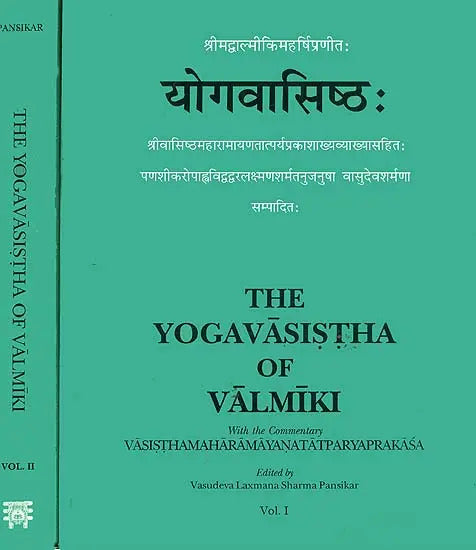






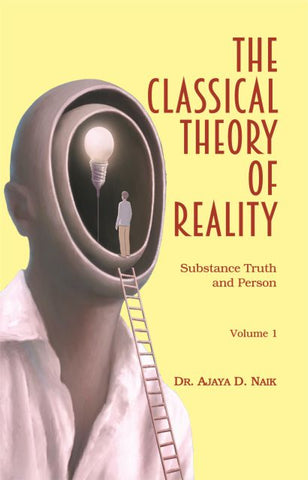
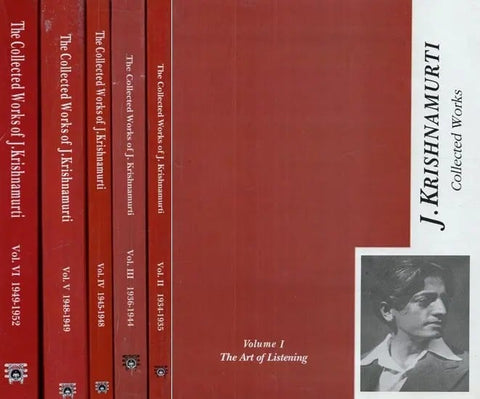

![A HISTORY OF INDIAN PHILOSOPHY [5 VOLUMES] by Surendranath Dasgupta](http://www.motilalbanarsidass.com/cdn/shop/products/HISTORYOFINDIANPHILOSOPHY_large.jpg?v=1675238163)
